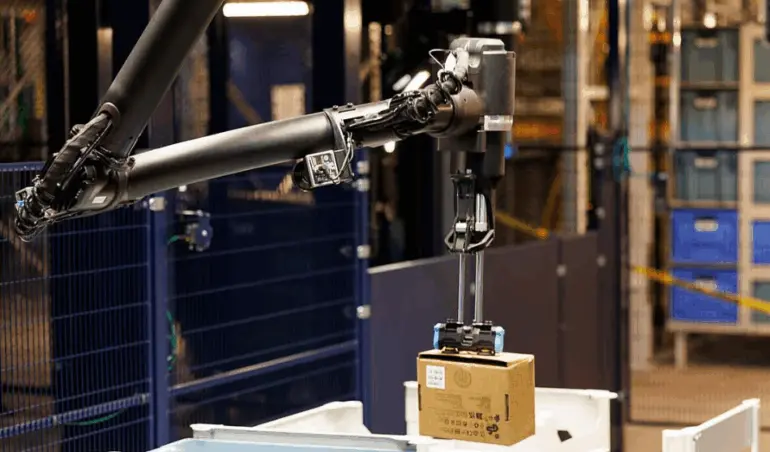Amazon on Wednesday announced that it is accelerating the automation of its warehouses through advances in artificial intelligence (AI) and robotics, a move that is raising renewed questions about the future of human labor at the company.
At a demonstration held in a sprawling distribution center in Silicon Valley, the e-commerce giant showcased a series of robotic systems designed to boost efficiency and speed up operations. Amazon said AI is not only driving these innovations but also dramatically shortening the time it takes to develop and deploy them.
Among the featured technologies was “Blue Jay,” a robotic arm capable of picking, sorting, and consolidating items at a single workstation. The robot, now being tested in South Carolina, follows the earlier rollout of “Vulcan,” introduced earlier this year, which Amazon described as having a “sense of touch” to handle delicate tasks in order fulfillment.
Tye Brady, chief technologist at Amazon Robotics, said AI had reduced the time needed to design, build, and deploy Blue Jay by two-thirds, completing the process in just over a year.
“That’s the power of AI,” Brady said. “Expect more rapid development cycles like this, we’re on a trajectory to supercharge the scale and impact of innovation in our operations.”
Brady dismissed concerns that the rise of AI and robotics could lead to widespread job losses, noting that Amazon has created more US jobs in the past decade than any other company.
“To our frontline employees, here’s my message,” he said. “These systems are not experiments—they’re real tools built for you, to make your job safer, smarter, and more rewarding.”
However, The New York Times reported on Tuesday that increased automation could allow Amazon to avoid hiring up to 160,000 workers within two years, even as its retail business expands. Analysts warn that the technology could reduce the need for seasonal or temporary staff, especially during peak shopping periods.
Amazon also unveiled an AI agent designed to coordinate robots and human warehouse teams more efficiently, alongside camera-equipped smart glasses that provide navigation and delivery instructions to drivers.
AFP


